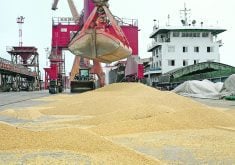India’s attempts to keep pulse price inflation in check is backfiring, leading to huge profits for growers and shippers in exporting nations, say the country’s commercial importers.That was the sentiment expressed by traders attending the recent International Pulses Trade and International Confederation (IPTIC) meeting in Brisbane, Australia, according to a column that ran in The Hindu Business Line.India’s state trading enterprises have been mandated by the government to import 1.5 million tonnes of pulses for resale to the commercial sector and public food distribution systems. The government covers the agencies for up to a 15 percent loss, a subsidy that is unavailable to private importers.The goal is to bridge the growing pulse supply gap in India, providing price relief to consumers. But traders allege the opposite is happening.”Instead of delivering any real relief to domestic consumers, the working style of the public sector corporations have actually helped overseas pulse growers and suppliers enjoy substantial profits,” said Gurusamy Chandrashekhar in a column he wrote for India’s second largest business daily.Chandrashekhar said in an e-mail response to questions about his column that India’s state trading enterprises typically account for 15 to 25 percent of the country’s pulse imports but they have a disproportional influence on prices.”Indian state enterprises are over-enthusiastic in floating tenders and striking trade deals. Their actions send out bullish signals and encourage exporters to jack up prices,” he said.Their “untimely and commercially less savvy actions” are leading to a firming of overseas pulse prices to the tune of $50 to $100 US per tonne, Chandrashekhar estimated.Brian Clancey, editor of Stat Publishing, attended the IPTIC meeting in Australia and confirmed that the anger in the room was palpable when Rajiv Agarwal, secretary to the government of India, ministry of consumer affairs, food and public distribution, spoke to delegates.”When he spoke, the Indian importers were really on his case. They were very hostile,” said Clancey.”Their business is being taken away by the government and they’re not happy about this at all.”There were accusations that the state trading enterprises are hording pulses in dockside warehouses waiting for prices to rise, a serious allegation in a country beset by food shortages and food price inflation.Clancey said India’s import subsidy policy has scared away commercial traders who worry about competing with state trading companies that can incur a 15 percent loss on sales and still break even.”That chilled the commercial imports, thereby reducing the overall supply available in India, therefore contributing to a firmer tone in prices,” he said.But that doesn’t mean Canadian growers are getting rich. Farmers don’t feel they are getting paid enough when they look at the prices in India, said Clancey.One thing that would improve the situation in India is if the state trading enterprises reduced the minimum sale quantity at their commercial auctions from 300 to 500 tonnes down to 10 tonnes, said Chandrashekhar.The current policy keeps stocks in the hands of a few large buyers. Reducing the minimum sale quantity would increase competition and keep prices in check, he said.The 15 percent subsidy expires on Sept. 30. Private traders are ratcheting up the pressure on the government to make sure it is not renewed.
Read Also

Defence investments could benefit agriculture
A bump in Canada’s NATO spending commitments could lead to infrastructure investments that would benefit rural areas















